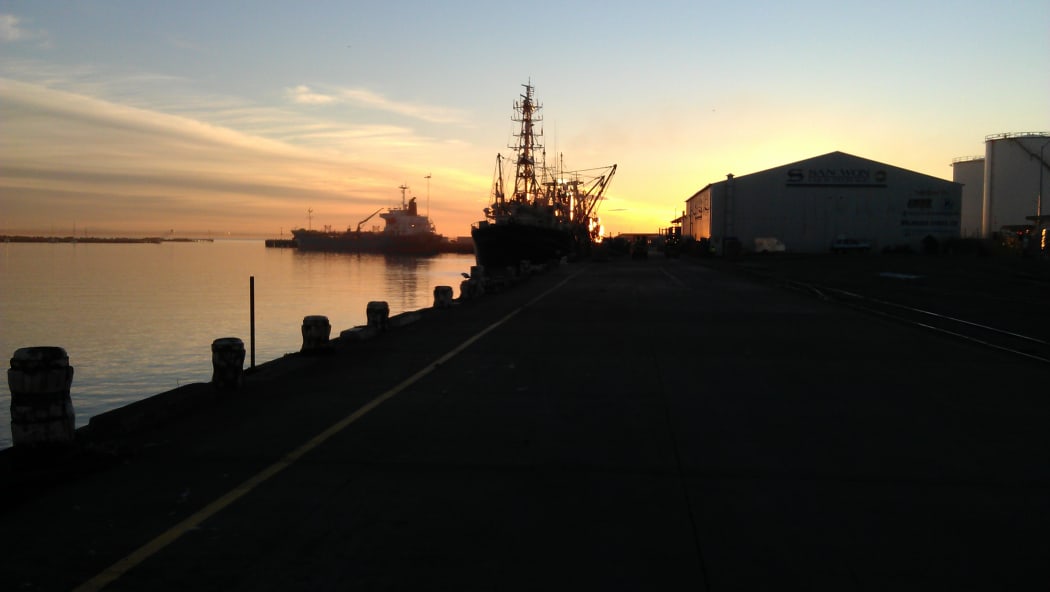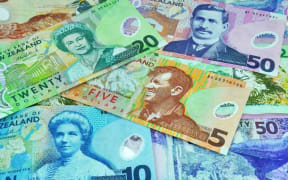There is no chance the government will achieve its goal of boosting exports from 30 to 40 percent of GDP by 2025, according to a business lobby group.
The target has fallen away in recent years, with the share of the country's economic output represented by exports declining over National's tenure.

The government's own targets unlikely to be met, says EMA Photo: RNZ
The Employers and Manufacturers Association (EMA) and other groups were now urging the government to put export growth at the top of the agenda, saying it must do so if it was serious about raising the country's living standards.
The government's target of lifting exports as a share of the economy from 30 to 40 percent by 2025 was rightly an aspiration, EMA chief executive Kim Campbell said.
But he said New Zealand was falling well short of making that target, with exports declining from 31 percent of GDP in 2008 to 29 percent this year.
"If you look at our recent performance, frankly it's not very good and I would argue that even the trend, to fall short of it, is not there. So I would say whilst it's a great target, the way we're currently doing with the current policy settings, there's not a chance in Hades we'll achieve it."
With export earnings at $49 billion, the 2025 target of $120b looks a long way off.
Chief executive of the Treasury Gabriel Makhlouf remained optimistic and said it was realistic.
But he said whether the government reached that goal on time was immaterial in some ways.
"To be honest if we get there by 2025, or 2026 or even 2030, I'm not sure the precise date matters. What does matter is that big shift.
"I don't think it's unrealistic, but I do think it requires a pretty big effort by the business community and government."
But Economic Development Minister Steven Joyce has dismissed the claims and believed the government's goal of boosting exports to 40 percent of GDP by 2025 was achievable.
"It's ultimately dependent on a lot of companies doing well, but what I'm seeing around the world when I get to travel, or around New Zealand, is that there are companies that are really starting to hit their straps after a period of quite tough love from the exchange rate," Mr Joyce said.
"They've shown that they can get out there and compete and be successful on the world stage, and of course we've got a comprehensive programme supporting it."
Mr Joyce maintains the government's measures will boost exports close to its stated goal in 10 years' time.
Mr Campbell said it was time to have a good hard look at what is needed to get export growth back on target, including boosting foreign direct investment and changes to research and development incentives.
"What we need to do is say is this a target we all agree on and frankly I don't think there's going to be a lot of argument about it. And then maybe have a laundry list of things we need to do to get there in a much more pragmatic way.
"I think right now there's been thinking that well, it'll all take care of itself. Well, I suspect that it isn't."
Ganesh Nana at economic consultancy BERL went a step further.
Dr Nana said the current obsession with inflation has to end because all it has done is raise interest rates and drive up the dollar, making it hard for exporters to plan ahead and survive.
"Everybody agrees exports are important. Why not have a go where exports are on that higher pedestal if we do honestly believe that's the most important thing.
"Do we honestly firmly believe that exports are the most important thing in the New Zealand economy Or are we going to continue in the 1990s mindset where inflation is the most important?"
Dr Nana was unlikely to get his wish.
The government has consistently rejected any change in monetary policy, and Mr Joyce believes his blueprint for economic growth - the Business Growth Agenda - is the best approach to boost export's share over time.
Meanwhile official figures show the annual trade deficit is at its highest level in more than six years.
Imports exceeded exports by $3.7b in the year to November which was the largest shortfall since April 2009.
Exports fell because of lower dairy and forestry prices, while imports rose as companies and households spent more on overseas-made goods.




